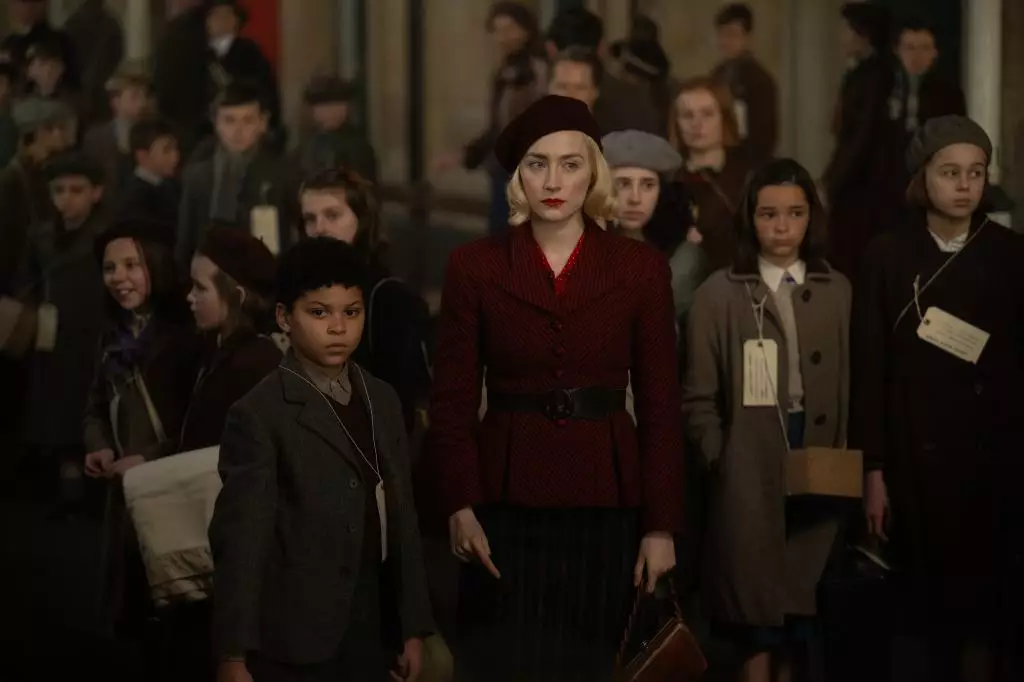The cinematic landscape is often enriched by narratives that illuminate the shadows of history, and in “Blitz,” Steve McQueen deftly navigates the bleak corridors of wartime London through the eyes of a child. With a backdrop of the German Blitzkrieg, this narrative film invites audiences to engage with the harrowing experiences of those affected by the bombings, providing a fresh lens through which to view an era riddled with destruction and loss.
Following his exploration of the Nazi occupation in Amsterdam through the documentary “Occupied City,” McQueen embarks on a new journey with “Blitz,” which premieres at significant film festivals before its public rollout on Apple TV+. McQueen’s decision to delve into the experiences of a young boy during the Blitz underscores his commitment to telling stories that are intimately human and tragically grounded in reality. The film creates a counterpoint to previous representations of this dark period in British history, particularly contrasting with John Boorman’s semi-autobiographical “Hope and Glory,” which provided a lighter, albeit still poignant, perspective.
The narrative is set in the tumultuous months between September 1940 and May 1941. It opens with a gripping bombing sequence – a technical marvel that showcases McQueen’s mastery in visual storytelling. The bombings are not merely violent acts; they are depicted as devastating events that alter the fabric of London life. This artistic approach draws viewers into the chaos while encouraging them to reflect on the psychological impacts of war, particularly on the young.
At the heart of “Blitz” is George, a biracial boy whose innocence starkly contrasts with the brutality of the world around him. Portrayed by newcomer Elliot Heffernan, George is not only searching for familial connections but also grappling with his identity in a society fraught with racial dynamics. His relationship with his mother, Rita, played by Saoirse Ronan, is pivotal in grounding the story in raw human emotion. The layered narrative deftly explores their interactions as they navigate not only personal loss but also the larger societal chaos that threatens their existence.
McQueen crafts George’s odyssey with profound empathy, allowing audiences to witness his growth from a vulnerable child to a determined survivor. After being separated from his mother and sent to the countryside for safety, George’s impulsive decision to return home sets off a series of events that reflect themes of resilience and abandonment. As he encounters various characters along the way, the film pays homage to classic literature, evoking the spirit of Dickensian tales but framed within the stark realities of war.
The supporting cast adds depth to the narrative, particularly through Rita’s life at the munitions factory where camaraderie flourishes amidst chaos. Character dynamics within this factory illustrate how community bonds are both tested and strengthened during times of crisis. Rita’s eventual participation in a BBC radio show serves as a touching moment of normalcy amidst the turmoil, highlighting moments of joy even in dark times.
Moreover, the film explores the consequences of desperation—where looting becomes a means of survival. George’s involvement with a group of juvenile delinquents echoes the safety nets that can disintegrate during wartime. Here, McQueen plays on the conflicting emotions of understanding the kids’ situation while also portraying the moral ambiguities that arise in desperate times.
As expected of McQueen, “Blitz” excels in its audiovisual execution. Cinematographer Yorick Le Saux captures the stark contrasts between the bombed-out streets of London and the vibrant, albeit superficial, nightlife depicted in a nightclub scene that epitomizes the veneer that masks the broader chaos. The dissonance between the elegance within the club and the harrowing reality outside evokes a palpable tension, mirroring George’s own internal struggles.
The score by Hans Zimmer acts as a haunting backdrop that enhances the emotional weight of the narrative, intertwining melodies that symbolize both hope and despair. Each musical note resonates deeply, echoing the human condition amid suffering and survival.
“Blitz” transcends its historical setting, echoing relevant global themes that continue to resonate today—particularly in light of recent conflicts affecting children around the world. As McQueen taps into the agonizing reflections of young lives disrupted by violence, he poignantly reminds audiences of the cyclical nature of history. Just as George bravely searches for home amid chaos, today’s children find themselves in crises that echo the past, enhancing the film’s urgency and impact.
In crafting “Blitz,” Steve McQueen not only recounts a significant historical moment but also delivers a universal narrative of resilience, identity, and the haunting loss of innocence. Through exquisite storytelling and powerful visual artistry, he invites audiences to reflect and remember—because in understanding our past, we may forge a path toward a more compassionate future.

